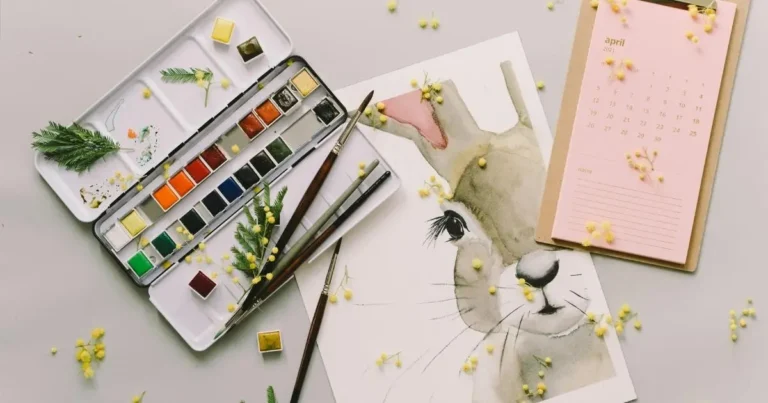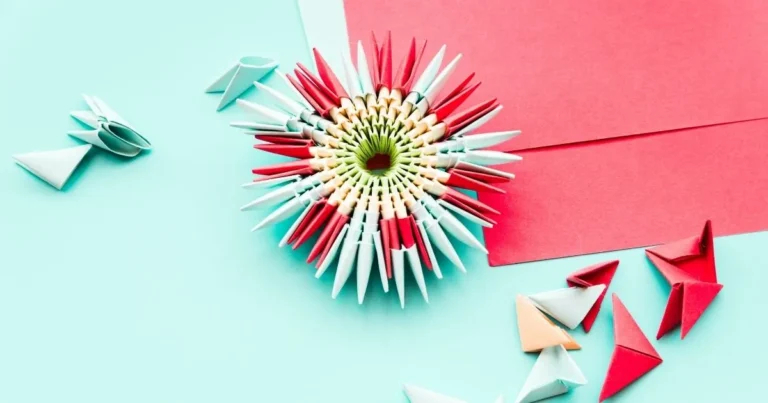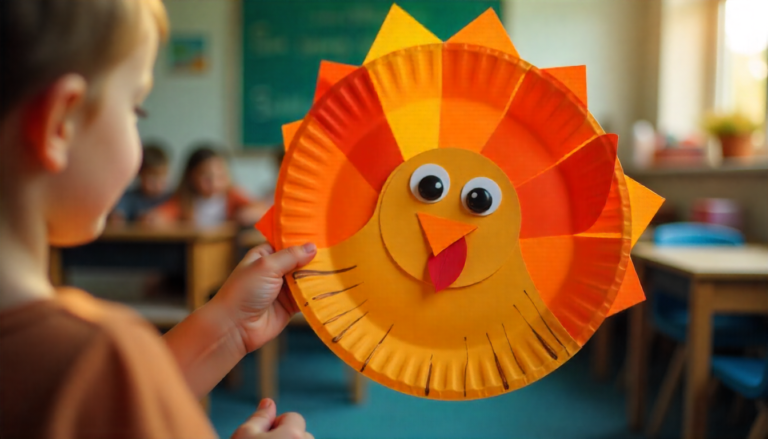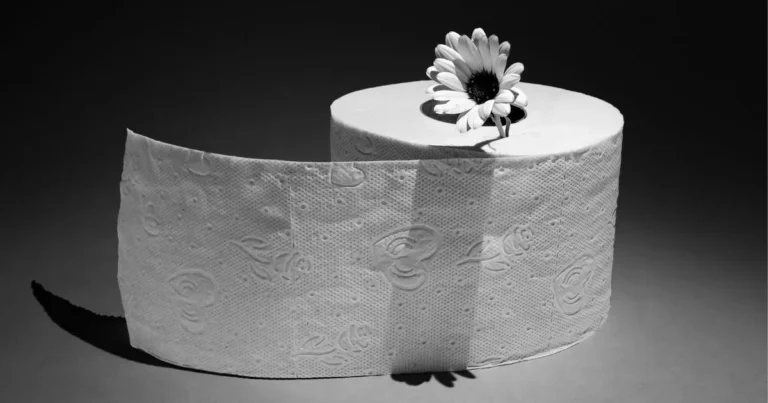How to Make Easy Origami – Fun and Simple Projects
Are you intrigued by the art of folding easy origami paper into detailed designs? Origami, an ancient Japanese art, has brought joy and calm for centuries. Learning origami for beginners opens a door to creativity and precision.

Starting your origami journey, you’ll find it’s more than just folding paper. It’s about making something beautiful and meaningful. With a few simple folds, you can make stunning designs. These can be used as decorations or gifts.
Key Takeaways
- Discover the basics of origami and its significance.
- Learn simple folds to create beautiful designs.
- Understand the benefits of practicing origami.
- Explore the world of origami paper craft.
- Get started with origami for beginners.
The History and Significance of Origami Paper Craft
Exploring origami reveals its rich history and cultural importance. Origami, meaning “folded paper,” is a key part of Japanese culture for centuries.
Origins of Japanese Paper Folding
Origami’s roots are in ancient Japanese rituals and ceremonies. Paper folding art was used for prayers and to wish good fortune.
Cultural Significance Throughout History
Origami has been vital in Japanese culture, symbolizing peace and harmony. It connects heaven and earth. Each fold tells a story and holds deep meaning.
Modern Popularity and Applications
Today, origami goes beyond traditional uses. You can find it in art, education, and science and engineering.
Origami in Education
In schools, origami teaches math, spatial skills, and fine motor control. It makes learning hands-on and fun.
Origami in Science and Engineering
Origami’s principles help create new technologies, like foldable robots and medical tools. Japanese paper folding inspires innovation in design.
Essential Materials for Origami
Starting an origami project means picking the right materials first. This is key for any DIY origami project. The paper you choose is especially important. It impacts both the making process and the look of your origami.
Types of Paper for Different Projects
Origami often uses special paper types.
Traditional Origami Paper
Traditional origami paper, or “washi,” is known for its strength and beauty. It’s perfect for detailed designs.
Alternative Papers for Beginners
For newbies, papers like kami or printer paper are easier to work with. They’re great for learning without spending a lot on washi.
Additional Tools That May Help
Even though origami is just paper, tools like a bone folder or tweezers can help. They make precise folds easier, especially in hard models.
Setting Up Your Workspace
A tidy workspace is key for making origami well. Make sure your area is flat, bright, and free from distractions.
| Material | Description | Usefulness for Beginners |
|---|---|---|
| Traditional Washi | Durable, aesthetic, traditional | Moderate |
| Kami Paper | Colorful, accessible, forgiving | High |
| Bone Folder | Tool for precise folds | Low |

Basic Origami Techniques and Folds
Origami is all about mastering basic techniques and folds. These are the foundation for making detailed designs. Learning these basics will help you move on to more complex models and improve your paper crafting skills.
Understanding Origami Symbols and Diagrams
Origami instructions use symbols and diagrams to guide you. These visual aids show how to fold the paper right. Symbols like lines and arrows help you follow origami tutorials accurately.

Fundamental Folds Every Beginner Should Master
Learning basic folds is key to improving in origami. These folds are the base for more advanced designs and are used in many creative paper crafts.
Valley and Mountain Folds
The valley and mountain folds are essential. A valley fold folds the paper towards you, creating a crease. A mountain fold folds it away from you, making a ridge.
Squash Folds and Reverse Folds
The squash fold flattens a part of the paper. It’s often used with other folds for complex shapes. The reverse fold turns a flap inside out, changing a fold’s direction or adding detail.
Petal Folds and Sink Folds
The petal fold makes delicate flower petals. It involves precise folds that open like petals. The sink fold tucks paper inside, making designs neater or more compact.
Common Mistakes and How to Avoid Them
Beginners often make mistakes in origami. Errors include misreading symbols, folding wrong, or not making folds sharp. To avoid these, practice often and follow origami tutorials carefully. Paying attention to diagrams and symbols will also boost your skills.
Simple Origami Projects for Beginners
Starting with easy origami projects is a great way for beginners to learn. These projects teach you the basics of paper folding. They also make you feel proud as you finish each one.
Classic Paper Crane Tutorial
The paper crane is a famous origami design that looks elegant and is a bit challenging. It’s perfect for beginners who want to improve their folding skills.
Step-by-Step Instructions
- Begin with a square piece of paper, with the colored side up.
- Fold the paper in half diagonally to make a crease.
- Make another diagonal fold, creating an ‘X’ crease.
- Follow the traditional origami crane instructions to finish the model.
Troubleshooting Common Issues
- If your crane looks off-balance, check your first folds.
- Make sure all edges are lined up right to avoid any imbalance.
Easy Origami Box Instructions
Making an origami box is both fun and practical. It’s a great way to learn how to make useful items with origami paper craft.
- Start with a square paper and fold it in half to make a crease.
- Make more folds to shape the box’s edges and corners.
- Adjust the folds to make sure the box is flat.
Simple Animal Designs to Practice
Origami animal designs are a fun way to practice your folding skills. Start with the origami dog and origami fish.
Origami Dog
The origami dog is a cute and simple project. It can be made with just a few folds.
Origami Fish
The origami fish is another simple design. It teaches you to make shapes with origami paper craft. It’s great for practicing different folding techniques.
By starting with these simple DIY origami projects, you’ll quickly get the hang of origami. You’ll enjoy the many benefits this traditional art form offers.
Intermediate DIY Origami Projects
Ready to level up your origami skills? These intermediate DIY projects mix art and function. They reward your patience and detail with stunning pieces perfect for home decor or gifts.
Decorative Origami Flowers
Origami flowers add elegance to any space. They work well alone or in arrangements.
Lotus Flower Tutorial
The lotus flower symbolizes beauty and growth. It requires complex folds, but the outcome is worth it.
Rose Design Instructions
The rose is a timeless origami design of love and appreciation. Its detailed petals make it a challenging yet fulfilling project.
Functional Origami Items for Your Home
Origami isn’t just for decoration; it’s also for practical items. You can make useful pieces for your home.
Bookmarks and Envelopes
Bookmarks and envelopes are handy items made with origami techniques. They’re great for personal use or as thoughtful gifts.
Decorative Containers
Decorative containers are perfect for storing small items like jewelry. They bring a handmade touch to any room.
Modular Origami Basics
Modular origami involves creating and combining modules for a larger design. It’s a captivating method for creating complex, beautiful pieces.
| Project | Complexity Level | Time Required |
|---|---|---|
| Lotus Flower | Intermediate | 30 minutes |
| Rose Design | Intermediate | 45 minutes |
| Decorative Container | Intermediate | 20 minutes |
Advanced Traditional Paper Art Techniques
Looking to explore beyond basic origami? Try wet-folding and complex patterns. These advanced techniques will deepen your paper folding skills and open new creative doors.
Complex Folding Patterns
Complex patterns need patience, precision, and a solid origami base. They lead to stunning art that shows off your skill and creativity.
Wet-Folding Technique
The wet-folding method uses damp paper for smooth, curved folds. It’s great for making realistic, three-dimensional models.
Materials Needed for Wet-Folding
- High-quality, thick paper that can withstand moisture
- A spray bottle with water
- A surface for drying the finished model
Step-by-Step Process
- Dampen the paper lightly with water.
- Fold the paper into the desired shape, using gentle, smooth motions.
- Allow the model to dry completely before handling.
Creating Your Own Origami Designs
Ready to design your own origami? Learn the design principles and find inspiration from various sources.
Principles of Origami Design
Origami design uses folds to shape paper into forms. It’s about knowing your paper’s limits and the geometry of folds.
Resources for Inspiration
Find inspiration in nature, art, and architecture. Check out origami books, online tutorials, and other artists’ work.
| Technique | Description | Skill Level |
|---|---|---|
| Complex Folding | Intricate sequences of folds for elaborate designs | Advanced |
| Wet-Folding | Dampening paper to create smooth, curved folds | Intermediate/Advanced |
| Origami Design | Creating new origami models from scratch | Advanced |
Conclusion: Continuing Your Origami Journey
As you finish this guide, you’ve started your journey into Japanese paper folding. With practice and patience, you can learn many origami designs. It’s not just folding paper; it’s a new skill and a way to appreciate Japanese culture.
To keep going, try different models and more complex designs. There are many resources online, like video tutorials and origami communities. They can help you get better. As you improve, you’ll enjoy making something beautiful and feel proud of your new skill.
Keep practicing, and you’ll soon make intricate designs. Origami is vast, and there’s always something new to learn and discover.
FAQ
What is origami, and where did it originate?
Origami is the traditional Japanese art of folding paper. It has been around for centuries. It started in Japan, where paper came from China.
What type of paper is best for origami?
The best paper for origami is “washi,” known for its strength and foldability. But, beginners can use kami or printer paper too.
How do I read origami diagrams and symbols?
Origami diagrams use symbols for different folds. Learning these symbols helps you understand the diagrams. Start with simple models to practice.
What are some common mistakes to avoid in origami?
Mistakes include wrong folds and edges not lining up. To avoid these, be patient and follow instructions well. Practice often.
Can I create my own origami designs?
Yes, you can make your own designs once you know the basics. Try different papers and patterns to create unique models.
What are some applications of origami beyond its traditional context?
Origami is used in education, science, and engineering today. It helps teach math and problem-solving. It also inspires new designs.
How can I improve my origami skills?
Improve by practicing often and starting with simple models. Watch tutorials and join origami groups. Learn from experts.
What are some popular DIY origami projects for beginners?
Beginners like making paper cranes, boxes, and simple animals like dogs and fish. These projects help you learn basic folds.







